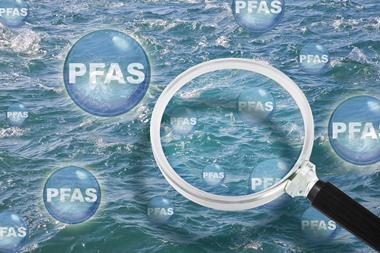The EEA’s large-scale climate risk report outlines the multiple risks, the urgent action needed – and who needs to take ownership of change. Risk managers must seize this chance to use their skills and insights to turn analysis into action, says FERMA’s Charles Low.
In March, Brussels saw the publication of the first European Climate Risk Assessment (EUCRA), produced by EU agency European Environment Agency (EEA), which provides environmental information to policymakers and the public.
The EUCRA identifies 36 major climate risks for Europe within five broad clusters: ecosystems, food, health, infrastructure and the economy.

More than half of the identified risks demand action now and eight are particularly urgent, relating to conserving ecosystems, protecting people against heat, and protecting people and infrastructure from floods and wildfires.
The EEA’s climate risk assessment highlights the climate-sensitive sectors and the political priorities for adapting to climate change.
While showing the necessity to rapidly cut CO2 emissions and speed up the implementation of adaptation policies and measures in Europe, the EUCRA highlights risk ownership, and specifies those responsible for addressing the risks identified.
It also underscores the necessity for collaboration among the European Institutions and the 27 EU member states and the need to engage at the local and regional levels for the coordination and execution of action plans.
FROM ASSESSMENT TO POLICY
There was an EU-level report published in June on what must come next, which produces a set of recommendations to be taken up by the European Institutions and the public and private sectors over the next EU policy period – 2024–2029.
The European Commission – the EU’s legislative arm – responded to the EUCRA with a communication outlining four areas required for EU policy on adaptation:
- Improved governance of risks and responsibilities
- Better tools for empowering risk owners
- Harnessing structural policies (for example, spatial planning) to better manage climate risks EU’s call to action
- The right preconditions for financing climate resilience
FERMA understands the EUCRA has been viewed positively by policymakers and will likely be repeated, with the EEA again taking the lead.
Furthermore, it is probable that European-level climate risk assessments will be part of the EU’s next strategy on climate adaptation.
AVOIDING PARALYSIS THROUGH ANALYSIS
There is a clear need for public-private cooperation in formulating risk assessments and the policy response. Herein lies the opportunity as well as the challenge for risk managers.
Risk assessments are part of the EU’s toolkit. Such EU-level undertakings will provide useful information, although it is difficult to gauge how quickly the effects on businesses will become evident.
One statement within the EUCRA lays down a yardstick in this respect: “Risk severity is uncertain due to the lack of stress tests and insuff icient monitoring of supply chain vulnerabilities against current and future climatic hazards.”
Implementing stress testing and bringing in supply chain evaluations look to be increasingly vital tools for risk managers to help guide their companies through the risk environment.
Risk assessments at this level inevitably bring the skills of the risk manager to the fore, as they help to identify, raise awareness and eventually improve understanding of climate-related risks.
This is crucial for developing effective adaptation strategies at enterprise level. But to elevate these risk assessments to the next level will require the insights and foresights of risk managers.
This provides a key window of opportunity for risk managers to lean in to the policymaking sphere as well as elevating the status of the profession.
FERMA, and the entire European risk management community, should make the most of the spotlight!














1 Readers' comment